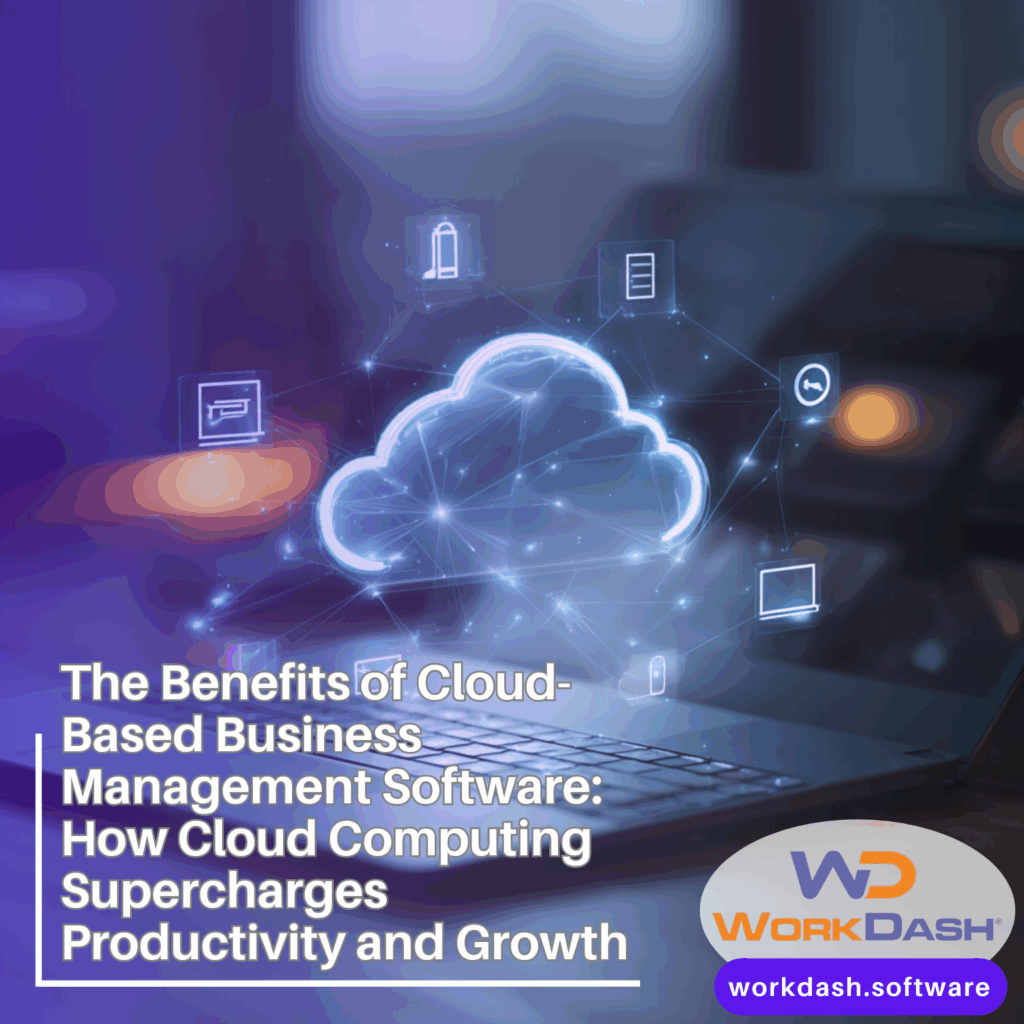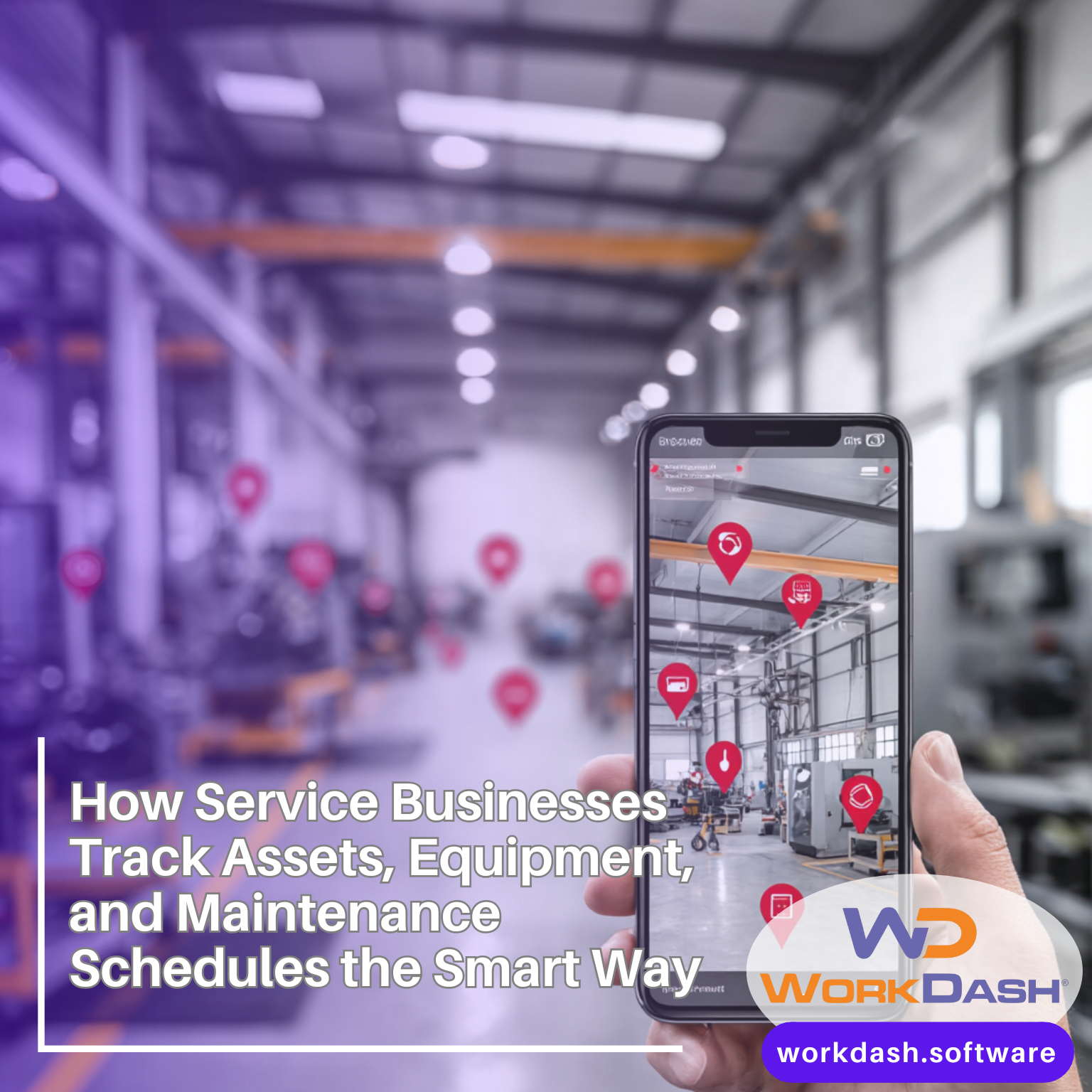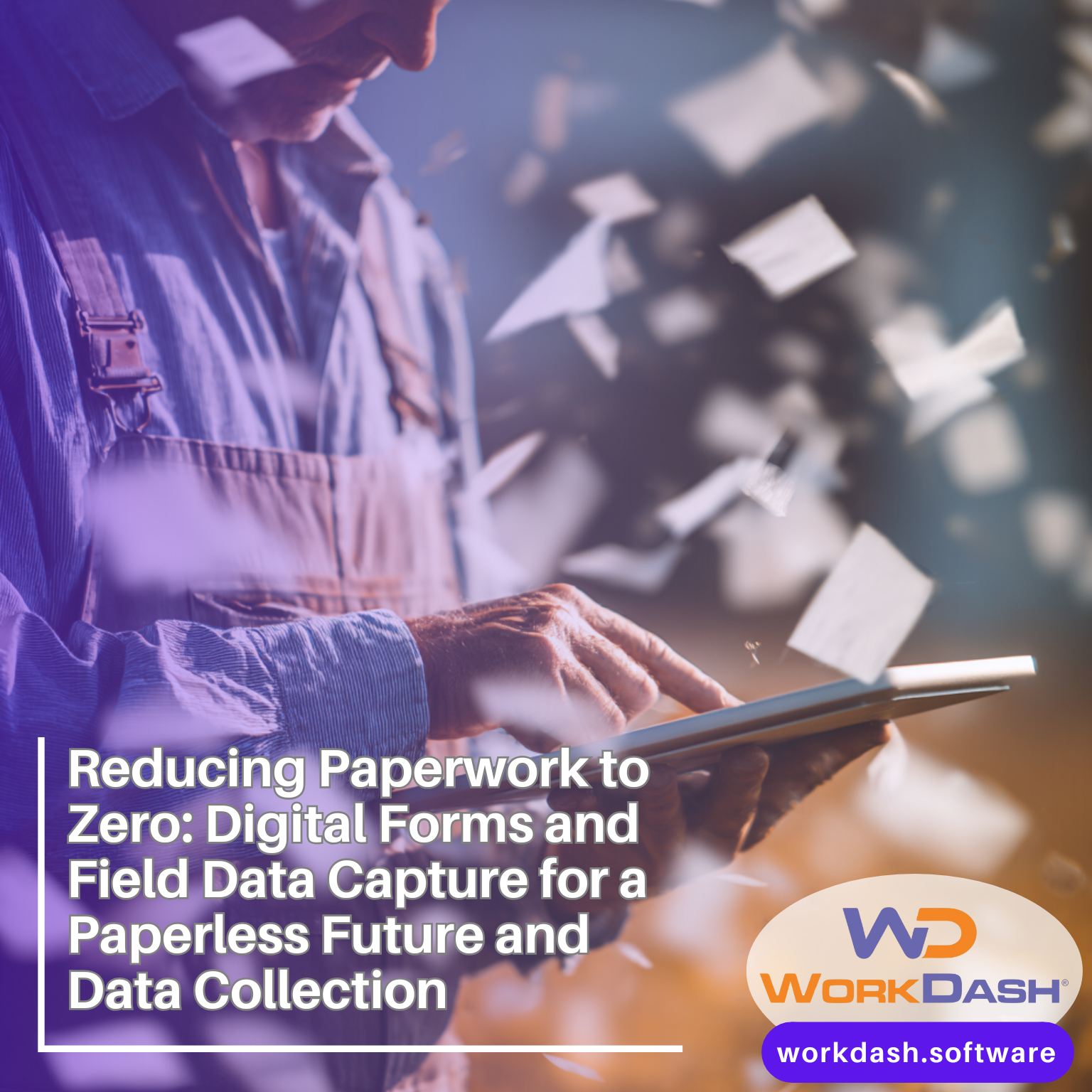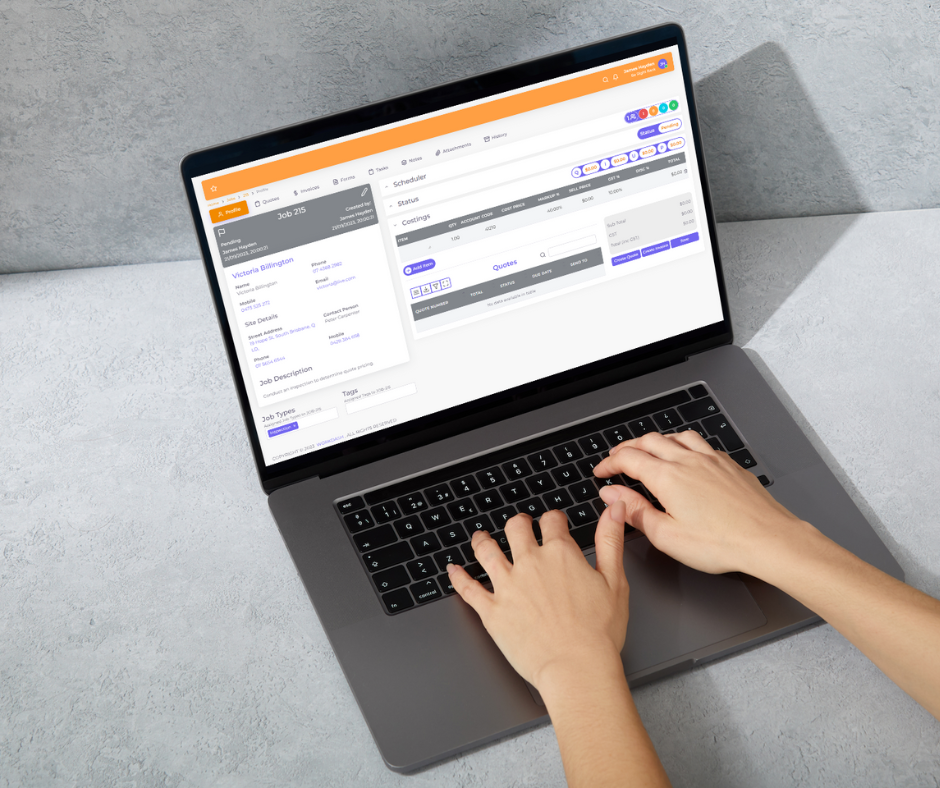Table of Contents
The Benefits of Cloud-Based Business Management Software: How Cloud Computing Supercharges Productivity and Growth
Modern teams don’t want to babysit servers or stitch together scattered tools—they want a cloud-based way to run the whole business. This article breaks down the benefits of cloud and the benefits of cloud-based software for a modern business management stack. You’ll learn where cloud computing shines (speed, real-time visibility, lower downtime, simpler security), where the advantages and disadvantages live, and how a practical cloud-based solution like WorkDash (a business management software platform, not ERP) helps you operate with confidence.
Outline
What Is Cloud-Based Business Management Software—and Why Now?
Key Benefits of Cloud Computing for Business Management
Cloud vs. On-Premise: Servers, Downtime, and Cost Savings
How Cloud-Based Software Connects CRM and ERP Systems (Without Becoming ERP)
Types of Cloud: Public Cloud, Private Cloud, and Hybrid Cloud Explained
Security, Data Management, and Disaster Recovery in the Cloud
Scalability, Real-Time Data, and Productivity: Meeting Business Demands
From Inventory to Accounting: Cloud Tools That Streamline Business Operations
Cloud Integrations and Service Providers: Choosing the Right Cloud Provider
Switch to Cloud Computing: A Practical Adoption Checklist
Advantages and Disadvantages: What to Expect When Using Cloud
Why WorkDash Is the Cloud-Based Platform Built for Business With Ease
1) What Is Cloud-Based Business Management Software—and Why Now?
Cloud-based software is simply software applications delivered via the Internet, hosted on cloud infrastructure rather than your own server room. Instead of buying hardware and software upfront and maintaining patches, you subscribe to cloud services or cloud-based services and access everything in a browser. In business terms, this means a cloud-based system for quoting, scheduling, projects, inventory management, and invoicing that your team can access anywhere with easy access and secure access to data.
For leaders focused on digital transformation, the benefits of cloud are immediate: faster deployment, lower maintenance, and real-time visibility across business operations. A modern cloud platform such as WorkDash is software designed to centralize your core business functions, connecting jobs, customers, and cash without the weight of legacy ERP systems.
WorkDash.software is a management platform and business management software (again—not ERP). The software provides scheduling, quoting, job tracking, analytics, and billing in one place, so you can automate routine steps, standardize processes, and grow with fewer moving parts.
2) Key Benefits of Cloud Computing for Business Management
Let’s pinpoint the key benefits and the benefits of using a cloud-based approach:
a) Real-time data and alignment
With real-time data, teams see the same truth—jobs in progress, stock levels, invoices due. This reduces rework, shrinks downtime, and raises productivity.
b) Cost savings and speed
You avoid capital expenses and lengthy installs. Cloud makes it possible to launch new modules quickly and pay as you grow, unlocking immediate cost savings and business efficiencies.
c) Security and continuity
With reputable cloud service providers, you inherit strong security, encryption, backups, and disaster recovery capabilities that are costly to replicate on-prem.
d) Mobility and customer experience
Mobile teams can serve customers from anywhere, improving customer experience while keeping customer information synced and stored in the cloud.
WorkDash packages these cloud-based strengths into an everyday toolkit for operations leaders who want fewer manual steps and more velocity.
3) Cloud vs On-Premise: Servers, Downtime, and Cost Savings
Running your own server stack demands updates, patches, and 24/7 vigilance—any lapse invites downtime. With cloud technology, the platform vendor manages upgrades and availability so your team can focus on work, not maintenance.
Advantages of cloud computing include elastic resources, global access, and rapid fixes. You’re not left evaluating firmware or RAID failures; you’re tracking growth. When cloud users shift from on-prem to cloud, most report immediate benefits: faster deployments, simpler security, and better data management. That’s why many cloud-based deployments replace aging boxes and reduce surprise costs.
WorkDash leverages modern cloud platform patterns to remove change-management drift and keep new features arriving on schedule—without interrupting your day.
4) How Cloud-Based Software Connects CRM and ERP Systems (Without Becoming ERP)
Cloud tools should connect your world without turning into a monolith. In practice, that means cloud-based software that integrates CRM and ERP endpoints so data flows (customers, invoices, items), while your main operations hub stays nimble. Think of WorkDash as a command center that can connect to erp software or an erp back office when needed—yet remains a focused management solutions layer for daily execution.
If you operate erp systems today, a modern ops front-end helps your teams act faster. If you don’t, WorkDash still delivers business with ease by running the field and back-office workflows most companies need—without forcing a heavy ERP footprint. It’s the difference between flexible cloud-based orchestration and a rigid, all-or-nothing replatform.
5) Types of Cloud: Public Cloud, Private Cloud, and Hybrid Cloud Explained
When leaders evaluate types of cloud, they usually compare:
Public cloud – shared, elastic resources from reputable cloud providers (e.g., Google Cloud) with industry-grade security controls.
Private cloud – isolated resources (single-tenant) for stricter control or compliance.
Hybrid cloud – a mix of both; keep sensitive workloads private while using public cloud solutions for scale.
Most growing teams start on public cloud for speed and flexibility. As regulations or scale change, hybrid cloud patterns help meet unique business needs. WorkDash is delivered as software as a service and built to integrate across these models so you’re never boxed in.
6) Security, Data Management, and Disaster Recovery in the Cloud
Security isn’t a bolt-on—it’s architecture. With strong cloud provider practices, data storage is encrypted, access is role-based, and backups fuel rapid disaster recovery. When your core records are stored in the cloud, you inherit best practices from reputable cloud providers and avoid single-server risk.
Data security and data management go hand-in-hand. Work orders, customer information, and payments stay centralized, versioned, and auditable. WorkDash builds on these guardrails so your operational data is resilient and accessible, even during regional incidents.
7) Scalability, Real-Time Data, and Productivity: Meeting Business Demands
Good systems scale with you. In the cloud, scalability is native—add users, sites, or workloads as business demands grow. That’s why companies adopt modern platforms—they want performance bursts during seasonal peaks, then right-size later.
With WorkDash, leaders monitor real-time boards for dispatch, approvals, and billing while managers track KPIs and analytics. It’s a pragmatic way to raise productivity every quarter and consistently meet business goals without over-engineering.
8) From Inventory to Accounting: Cloud Tools That Streamline Business Operations
Cloud-delivered business software connects the operational dots. For example:
Inventory management: keep counts live across locations; trigger replenishment automatically.
Accounting software: sync invoices, taxes, and payments so finance closes faster.
Supply chain management: unify purchase orders, vendors, and deliveries to reduce friction across the chain.
This is where software enables everyday gains. The right cloud tools automate routine steps and keep business operations moving. WorkDash unifies jobs, quoting, scheduling, and billing while handing off to accounting or ERP where it makes sense—no double entry, no brittle handoffs.
9) Cloud Integrations and Service Providers: Choosing the Right Cloud Provider
Cloud shines when it plays well with others. Evaluate service providers and cloud service providers by APIs, uptime track record, and partner ecosystems. If you need telephony, payments, or mapping inside your cloud-based platform, look for ready-made connectors and proven SLAs.
WorkDash integrates with leading accounting, messaging, and payment stacks while staying vendor-neutral—so you can plug into Google Cloud services or other providers as needed. A flexible integration strategy protects you from lock-in and helps you evolve as new cloud capabilities emerge.
10) Switch to Cloud Computing: A Practical Adoption Checklist
A smooth move is more about planning than tech. Use this switch to cloud computing checklist to guide cloud adoption and ensure you’re reaping the benefits early:
Evaluating cloud readiness – inventory current systems, dependencies, and compliance.
Prioritize quick wins – start with modules that deliver immediate benefits (e.g., scheduling + invoicing).
Map data flows – know where customer information and financial data travel.
Pilot with a core team – capture feedback and refine.
Train for outcomes – role-based training that’s practical, not theoretical.
Measure impact – track cycle time, downtime, rework, and cash collection.
Iterate and scale – expand once metrics show lift.
WorkDash is built for staged adoption: roll in jobs and scheduling first, then add quoting, billing, and reporting once the team is comfortable.
11) Advantages and Disadvantages: What to Expect When Using Cloud
Advantages of cloud and advantages of cloud computing are clear—speed, elasticity, security inheritances, and lower ops burden. But be sober about trade-offs:
Network reliance – your access depends on connectivity (mitigate with offline modes and mobile fallbacks).
Shared responsibility – your cloud provider secures the platform; you still manage user permissions and process discipline.
Change management – moving fast requires documentation and enablement so people adopt consistently.
Handled well, the trade-offs are small compared to the agility you gain. Companies that truly adopt modern cloud practices consistently report better visibility, fewer manual tasks, and higher team morale.
12) Why WorkDash Is the Cloud-Based Platform Built for Business With Ease
WorkDash.software is a practical cloud-based platform purpose-built to run operations—not a heavy ERP. It centralizes scheduling, jobs, quoting, approvals, invoicing, and real-time dashboards. It integrates cleanly with accounting and ERP software where you need it, but keeps your day-to-day agile.
Cloud native from day one—no server babysitting, updates land seamlessly.
Cloud-based software that’s role-friendly—dispatch, techs, finance, and managers share real-time data.
Cloud-based storage keeps records stored in the cloud with strong data security and disaster recovery posture.
Cloud-based services and integrations—payments, messaging, maps—plug in fast.
Cloud solutions that scale—add sites and users as you grow; use cloud-based capabilities to expand margins.
Cloud platform experience that’s approachable—leaders get management solutions that are simple to run, with cloud tools that make business with ease a reality.
Bottom line: WorkDash is a focused, cloud-based operations hub that removes day-to-day friction, supports customer experience, and gives you the competitive advantage to respond faster than rivals.
Glossary Touchpoints (So You’re Covered)
To ensure clarity if you’re new to the space:
Cloud / cloud computing – running apps and data in remote data centers rather than local servers.
Cloud-based / cloud-based software – software delivered over the internet as a subscription.
Cloud-based platform – a multi-module operations system in the cloud that orchestrates daily work.
Cloud provider – the vendor running the platform; look for reputable cloud providers.
Cloud infrastructure – the underlying compute, storage, and networking.
Software as a service – subscription delivery model for apps.
Key Takeaways (Bullet Summary)
Cloud and cloud-based software deliver real-time visibility, faster rollout, and lower downtime—key benefits of cloud computing for modern teams.
A cloud-based platform like WorkDash centralizes core business functions (jobs, quoting, invoicing, reporting) and integrates with accounting or ERP software only where needed—WorkDash itself is not ERP.
Expect cost savings, elastic scale, better data management, and stronger disaster recovery from reputable cloud providers.
Match types of cloud ( public cloud, private cloud, hybrid cloud) to compliance and agility needs; choose cloud service providers that fit your roadmap.
Use cloud tools to streamline inventory management, supply chain management, and finance; keep customer information stored in the cloud with strong data security.
Plan your cloud adoption: start small, measure lift, and expand—focus on modules with immediate benefits.
With WorkDash, you get cloud-based services that are software designed for operations leaders: cloud solutions that help teams meet business demands, raise productivity, and operate your business with ease.
By using cloud, you’ll be reaping the benefits of a simpler stack, cleaner integrations, and faster decisions—exactly what a modern business management strategy demands.
Ready to evaluate a focused, cloud-first operations hub? Explore WorkDash.software—a modern cloud-based management software approach that keeps your teams moving, your data clean, and your customers delighted.





